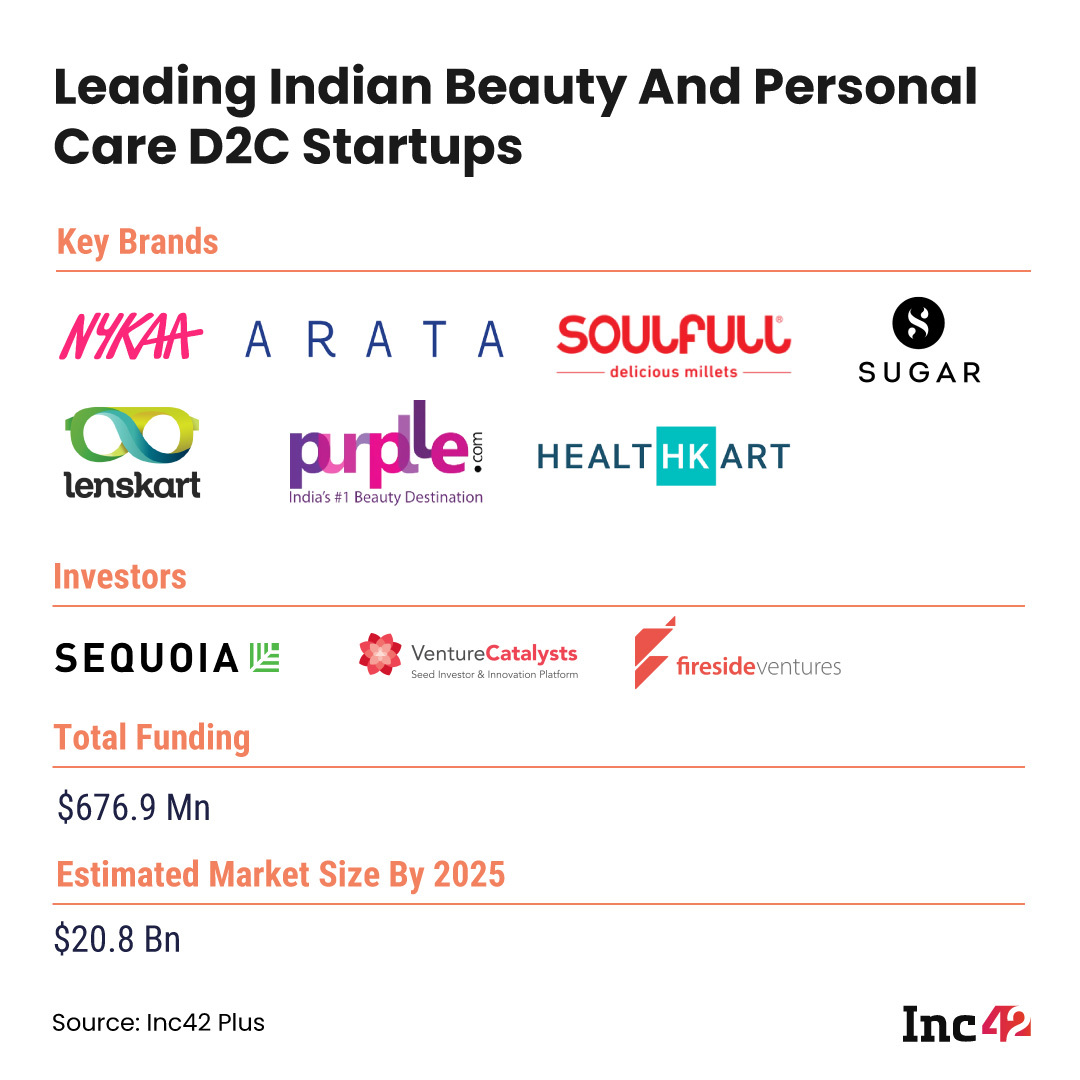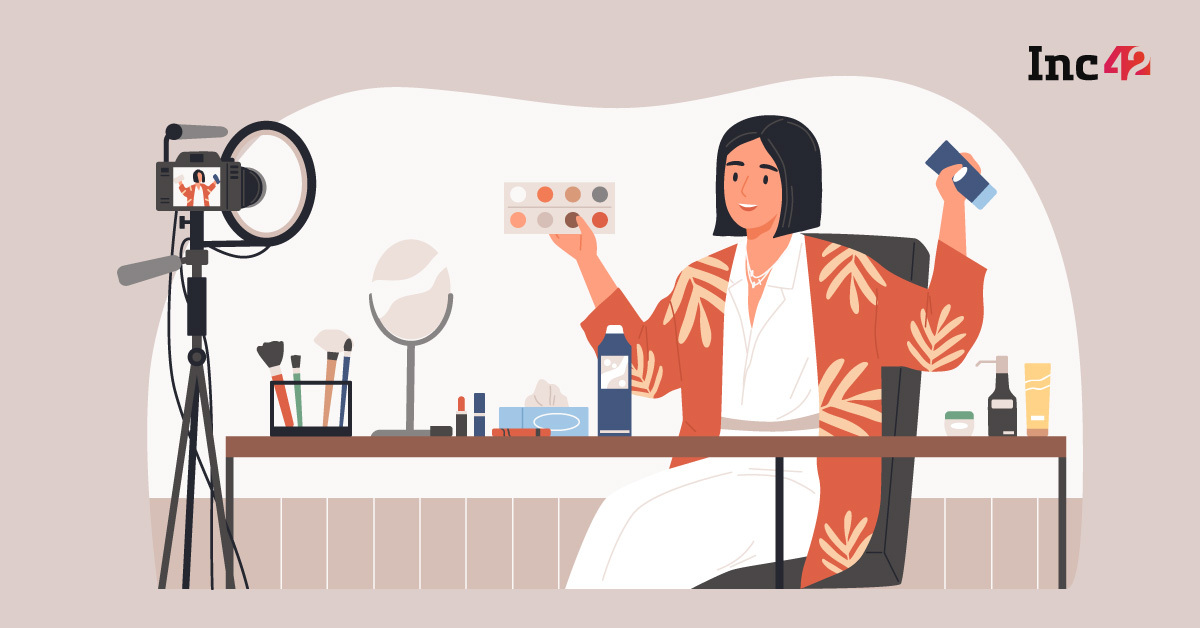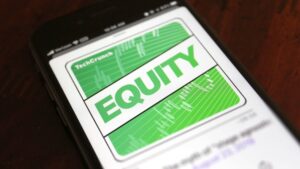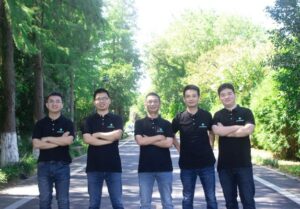Think of this. You are casually scrolling through your social media feeds, and you suddenly come across a video of a teenage cousin grooving to a popular Punjabi song. But what stuns you is her hair (or maybe the face), painted in a rainbow of colours. It makes you wonder where they find such colours. Then you scroll a bit more and come across a school senior talking about her skincare regime in a ‘sponsored post’.
Go farther down the page, and you will find at least one of your favourite web series actors endorsing an organic beauty brand. So, you wonder if you should check that out as well.
Does it sound all too familiar?
Relax! You are not the only one out there seeing these posts on your timeline.
Beauty, makeup and personal care (for this story, we will consider them as a combined category although these brands differ significantly) have made it to the top three topics that dominate social media feeds globally. This has, in turn, boosted the $26 Bn beauty and personal care market in India, home to a host of new and often niche cosmetics and personal care brands targeting people’s lifestyle needs rather than gender or age. This market is expected to grow to $37 Bn by 2025, according to Inc42 Plus. What’s more, many conglomerates in the FMCG space are actively investing in these brands due to their growth potential.
Think of Amazon and Wipro Consumer Care Ventures’ recent investments (March 2021) in MyGlamm, a Mumbai-based beauty brand and marketplace. Or the acquisition of Ahmedabad-based men’s grooming brand Beardo by homegrown FMCG company Marico in 2020. Interestingly, ITC and Emami went a step further and invested in Fireside Ventures, an early-stage fund focussed on consumer brands, with Gurugram-based skincare brand Mamaearth in its portfolio.
Apart from ecommerce and FMCG giants, traditional VC investors have been reasonably active in this space. Indian startups operating in the beauty-cosmetics-personal care segment raised close to $700 Mn between 2014 and April 2021. Plus, there had been big-ticket announcements and outstanding returns in recent months. Take, for instance, online beauty store Purplle’s $45 Mn fundraising from Sequoia Capital India, Verlinvest, JSW Ventures and others that gave early investor IvyCap Ventures 22x returns on its exit.
Or how micro VC firm India Quotient booked a 49x return on its investment into Mumbai-based makeup brand SUGAR after a part-exit in February this year, when the direct-to-consumer (D2C) beauty startup completed a $21 Mn Series C funding round. Meanwhile, Nykaa, another beauty and wellness giant from Mumbai, is eyeing a market listing later this year at a whopping $4.5 Bn valuation.
These shining startup stories are bound to impress all, but there is another common thread running through these narratives. These are not solely built on successful ecommerce strategies. As the saying goes, the culture of content – converged, contextual and collaborative – has been the growth driver in this space. And a huge chunk of it, especially makeup and beauty tutorials and product reviews, has played the most significant role in developing brand narratives and enabling brand discovery, thus creating leads and converting those to sales.
You had a taste of it in the beginning, and the more one explores, the deeper is the engagement. This also means nothing that we see on social media or the World Wide Web is random but part of a well-conceived inform-engage-convert strategy, more intricate than over-the-top traditional or digital marketing.
Now, the most crucial question: Are Indian startups and D2C brands in the beauty and personal care space using this opportunity well and catering meaningful content to drive business growth? Inc42 has spoken to many leading investors and enablers of the beauty product ecosystem to understand its dependency on effective content that helps these brands and the sector grow. It is time to take a deep dive into our findings.
The Content Push: Who’s Doing What To Unleash Engagement
As stated above, content is a key growth driver in the beauty industry and related segments, engaging target customers through beautifully depicted product information, great storytelling and impactful community interactions. In fact, Indian brands like Purplle, Nykaa and MyGlamm have invested heavily into content and, in some cases, acquired companies with strong networks of content creators across popular platforms like Instagram, Facebook, YouTube, Snapchat, TikTok, Moj, Chingari, Trell and many more. According to a Jefferies Research report released in May, Nykaa alone generates 10-15% of the Indian beauty content on YouTube.
Beauty as a category lends itself well to content-led engagement as it thrives on involved purchases with a high element of how-tos and recommendations. Also, users like to consume and personalise this content as much as possible to evaluate all available options for their skin types and other parameters, says Simranjit Kaur, vice-president, digital and technology and investment banking, at Avendus Capital.
“We are witnessing beauty-related content picking up the pace. Both millennials and younger audiences are keenly tracking and discovering new beauty trends and products, drawing inspiration from creators who are putting out informative pieces, tutorials and entertainment content (highlighting the glam world’s style quotient),” she adds.
Brands have also recognised an audience shift from traditional to on-the-go digital media, especially in pandemic times. What’s more, social media works as a crucial feedback medium for brands to test product acceptance and incorporate customer input into product development, she says.
Rajan Anandan, managing director at the venture capital firm Sequoia India and Surge, says India has more than 80 Mn high intent beauty buyers on content platforms, and these people are waiting to discover new products. Sequoia and Surge are among the VC firms with the most extensive portfolios of D2C beauty and personal care brands like Pankhuri, Faces, Mamaearth and Belora.
Given the number of beauty tutorials on YouTube to massive open online courses (MOOCs) on platforms like Udemy, Skillshare and Coursera and beauty-specific courses from the US-based celebrity learning platform MasterClass, the beauty skilling ecosystem is also opening up, say, industry experts. This further underlines the great consumer boom in this space and people’s longing to master the power of glamour through suitable content.
Democratising Content, The Vernacular Way
“People knew about fads like Korean skincare routines, but not many could understand what sequence (of application) or products actually helped users achieve those results. The self-styled influencer ecosystem made such products popular. But trust and familiarity were not built until global or even local celebrities featured in these (often sponsored) tutorials and talked about the niche D2C brands,” an internet and consumer business analyst said.
Consumer awareness also helped local brands launch similar products with local ingredients like turmeric and jasmine-based face serums (on the lines of Korean skincare), more suitable for Indian skin types.
D2C beauty brands in India have decided to push customer engagement further by forming social media partnerships with regional celebrities and micro-influencers hailing from Tier 2 locations and beyond. (Yes, many of them even come from small towns.) Of course, these influencers do not have the fan following of a global celebrity. But their respective communities are likely to buy their recommended products more readily as most of them relate at a cultural level. So, it is not surprising that brands are keen to promote local partnerships with Bhojpuri, Malayali, Tulu, Garhwali, Assamese or Mizo-speaking influencers who leverage local languages for wider reach.
According to Pulkit Agrawal, cofounder and CEO of Bengaluru-based social commerce platform Trell, more than 74% of women on the platform (it has over 50 Mn monthly active users) are looking for beauty and makeup-related content produced in their mother tongue, driving huge demand for vernacular micro-influencers.
“Interestingly, more than 62% of content creators on Trell, both men and women, are creating videos on beauty and makeup, and three out of 10 such videos feature branded (sponsored) content,” he says.

From Discoverability To Conversion: How Content Helps
Vernacular content and influencer-led social media marketing may work well for beauty shoppers, always on the hunt for new lifestyle products and their unique selling points. But does this model actually convert the click-happy curious crowd to loyal customers?
“Things were a bit different until smaller D2C brands came in with the need to build a strong brand story and an effective content ecosystem. After that, influencer marketing turned into a more organised, compensation-based model, and it has been effective in driving conversions. Currently, up to 30% of customers buy products after consuming the content, and the marketing cost is lower in this model,” says Namrata Sarma, head of content operations at Woovly, a Bengaluru-based ecommerce marketplace that uses its social media arm to promote D2C products through influencer-led content and reviews.
The diversity of influencer marketing also plays a crucial role in creating context and credibility. Unlike the traditional FMCG approach, where slim, fair-skinned celebs endorse all things glam, this new breed of social media endorsers will always be more accountable for their content and feedback.
For instance, if someone is living in Thiruvananthapuram (Kerala), Asansol (West Bengal) or Bina-Etawa (Madhya Pradesh), an influencer’s content on products that suit the local climate and festive requirements will always be more relevant than generic pan-India advertisements. Add to that the generous discounts that brands enable for their influencer-partners to bring in new customers and boost sales, and one knows what is working in their favour.
Moreover, the discount codes that their followers use make it easy to track conversion rates and make sense of every marketing dollar spent on influencers and their content tools. In brief, beauty startups, especially those in the D2C space, can run a tight ship with maximum impact and minimum cost.
The outcome of this approach is amply reflected in numbers. According to the Inc42 Plus D2C report, popular beauty brands such as Revlon and Lotus took around 20 years to reach the INR 100 Cr revenue mark. But new-age startups like Mamaearth and SUGAR Cosmetics took just four years to cross the same milestone. This speaks volumes about the effectiveness of the D2C model in a digital-first economy and how these disruptors are winning the trust of new-age consumers through an agile, content-driven marketing strategy.
However, here is the other side of the coin when it comes to omnichannel (online+offline) expansion.
Many D2C beauty brands have a captive audience base and thrive on repeat purchases made by loyal customers, as discussed in the story profiling 30 D2C Startups in June 2021. But to scale up further, they need to attract new customers through an offline presence. And here lies the catch. Physical stores have a widely diverse customer base, and brands may fail to highlight their USPs or cater to their target customers in the brick-and-mortar space. For instance, if a social media user consumes a lot of content on climate change and sustainability, it is easy to coax her into buying organic beauty products with relevant advertising. But for a niche brand to know which physical stores in Tier 2 or Tier 3 city will attract the same audience is an expensive and tricky business, experts say.
For now, this may not lead to a crisis as the pandemic is still driving online sales, and the brands have some breathing space to develop and scale their online models before zeroing in on offline distribution strategies. “We have seen D2C brands scale significantly with online presence alone (businesses worth INR 500 Cr+ are not uncommon) and carve a sizable space in the market. Hence, the timeline for offline expansion may get pushed out for brands in the current scenario,” says Kaur of Avendus Capital.
Why ‘Going Live’ Matters In The Beauty Space
As of now, ‘live’ engagements in the beauty ecosystem are used mainly to help influencers engage with their audiences and get a sense of their preferences. However, the market offers even more use cases.
Take, for example, Bengaluru-based Vah Vah!, an online skilling startup that has launched its services by offering courses in beauty skilling. Speaking to Inc42, Vah Vah! cofounder Shailesh Dixit says that beauty training is increasingly included as an online course even though the topic, in its totality, is a top category across social media platforms. However, converting a skill into a job opportunity takes more than pre-recorded videos.
“Most Indian subscribers consume Indian content, and the same is often used for premium courses. Of course, training platforms can be international, but the content will have to be local (if we are targeting a specific country like India). However, those looking to convert these skills into job opportunities should realise that MOOC platforms cannot address the training required as continuous feedback is needed to translate knowledge and information into practical skills,” he says.
Again, recent data from the National Skill Development Corporation reveals demand for more than 3 Mn skilled professionals in the beauty and wellness industry in the next three years. “The current beauty training ecosystem in India (including all leading private training networks) have the potential to train around 0.5 Mn individuals. But training at one of the leading private institutions can cost up to INR 1 Lakh. In contrast, online training facilities have the potential to reach a larger learner base at a much lower cost,” says Anandan of Sequoia Surge. Incidentally, Surge is an early investor into Vah Vah!
According to him, apart from job-related skills training, there is also a vast Indian market for beauty micro-courses as people want to learn how to groom themselves better. “We increasingly see this demand across Tier 2 and Tier 3 regions, and early-mover startups have started tapping into it,” says Anandan.
Online learning is only one part of the ‘live’ experience in the beauty space. The bigger slice of the pie is live commerce, and Chinese platforms like Alibaba’s Taobao, Douyin (TikTok) and WeChat have already used this format successfully to sell global beauty brands like L’oreal, Clinique and Estée Lauder. In fact, it has become an integral part of their brand marketing strategies at home. Live commerce influencers hold so much sway in China that Viya, a leading influencer there, sold $6 Bn worth of goods through her account in 2020. However, it is yet to be implemented worldwide.
Although the Chinese ecosystem allows users to buy goods from their favourite celebs’ live shows seamlessly (with minimum clicks and through a single app), the rest of the world (including the US, where digital commerce formats have matured most) has not managed this feat yet. A similar format is used in India for social commerce transactions, and resellers often go live via their business accounts (similar to social media accounts) to drive sales. But this usually involves multiple touchpoints where users view, book and pay for products on different platforms.
This model may change soon, though, as Indian startups such as Woovly, Trell, 335bazaar and Hypd are exploring their way around live commerce offerings. Of course, the endgame is all about sales conversion; at least, that is what the brands focus upon. So, most of these platforms are looking at cross-selling and covering specific segments, including beauty, personal care and fashion, as Indian consumers are more comfortable e-shopping in these segments.

The Beauty Playbook
Going by industry trends, brands know that beauty products sell, and consumers have a huge appetite for product discovery and good content related to this segment. But that does not mean everything is hunky-dory for these new-age brands. To begin with, they face tough competition from established brands with tried-and-tested manufacturing and R&D, while their lack of clarity around product disclosures have compelled influencers to call certain brands out on inconsistent product outcomes.
Worse still, D2C companies’ overdependence on social media for brand building and marketing means any negative feedback on those platforms can affect their sales and impact their credibility. But these are stories for another time. For now, the new-age beauty brands and their ecommerce enablers are carving a new and exciting retail journey, and a lot of their success will depend on how they create, manage and promote their content.
As Anandan says, “In early-stage startups, a key criterion is evaluating how brands engage with their customers, how they retain these customers and how they build their stories (around growth and sustainability). Smart utilisation of content is part of this journey.”










